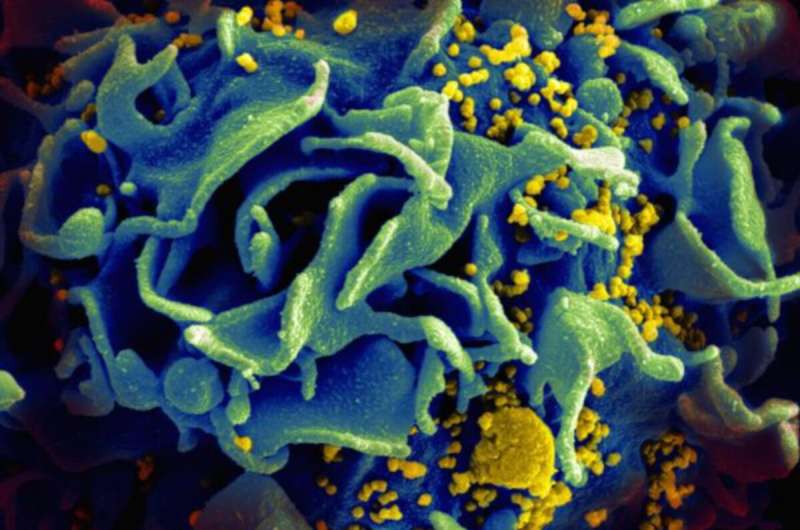Unique SA dataset reveals number of HIV deaths before antiretrovirals

A unique dataset has enabled scientists to better estimate the number of HIV-infected South Africans who had died by 2009 before ARVs became available publicly.
These data enable better assessment of mortality due to HIV and identification of those causes of death most strongly associated with HIV. The high prevalence of HIV among those that died demonstrates the impact of the HIV epidemic on adult mortality, on hospital services, and the extent to which early antiretroviral treatment would have reduced the burden of both.
Scientists at the University of the Witwatersrand, Johannesburg, and at the South African Centre for Epidemiological Modelling and Analysis (SACEMA) at Stellenbosch University published a paper, "HIV-attributable causes of death in the medical ward at the Chris Hani Baragwanath Hospital, South Africa," in the journal PLOS ONE.
Lead author Dr. Andrew Black is a pulmonologist in the Department of Internal Medicine in the School of Clinical Medicine at Wits University and at Helen Joseph Hospital. Professor Brian Williams, a mathematical modeler at SACEMA led the data analysis team, which comprised Trust Chibrawara, Zoe Gill, and Mmamapudi Kubanje, in collaboration with Professor Freddy Sitas, a South African-born cancer epidemiologist now based in Australia.
Initial estimates of the number of deaths attributable to HIV in South Africa in 2009 (the height of the epidemic) varied from 225,000 to 350,000 per year. These numbers were based on a range of data sources, indirect mathematical modeling, and a number of assumptions. Novel analysis by the scientists revealed an actual estimated number of deaths from HIV by 2009 at 250,000 per year.
Due to the stigma associated with HIV at that time, clinicians often did not include HIV status or AIDS-defining causes of death on the official death notification forms. The Baragwanath Mortality Record (BMR), however, allowed for a more accurate and detailed record of the causes of death.
Between 2006 and 2009, the BMR shows that 15,725 adults died and each patient's hospital number, age, sex, cause of death, date of admission, date of death, HIV status, CD4+ cell count and antiretroviral therapy status was recorded.
"We gathered data from just under 16 000 patients between 2002 and 2006. This made it the largest study of its kind in Africa," says Black, who along with Williams and the SACEMA team devised an innovative approach to analysis of the data.
"One of the challenges was to merge techniques normally reserved for chronic disease and cancer epidemiology with looking at an infectious cause. This model enabled us to estimate the AIDS-attributable fraction for those dying from Cryptococcus's, Kaposi's sarcoma and pneumocystis jirovecii, tuberculosis, gastroenteritis and anemia," says Williams.
The odds ratios for being HIV-positive ranged from 18 to 124. Genito-urinary conditions, meningitis and other respiratory conditions, as well as sepsis, lymphoma and conditions of skin and bone were also significantly associated with HIV, with the odds ratios for being HIV positive ranging from 3 to 8.
"The data revealed risks for a range of conditions that were over ten-fold. This is important because it tells us that any patient admitted now for a range of diseases—especially rare fungal ones, such as Cryptococcus's, and even some respiratory diseases—ought to be rapidly assessed for their HIV status and, if positive, be offered antiretrovirals immediately," says Black.
More information: Andrew Black et al. HIV-attributable causes of death in the medical ward at the Chris Hani Baragwanath Hospital, South Africa, PLOS ONE (2019). DOI: 10.1371/journal.pone.0215591


















